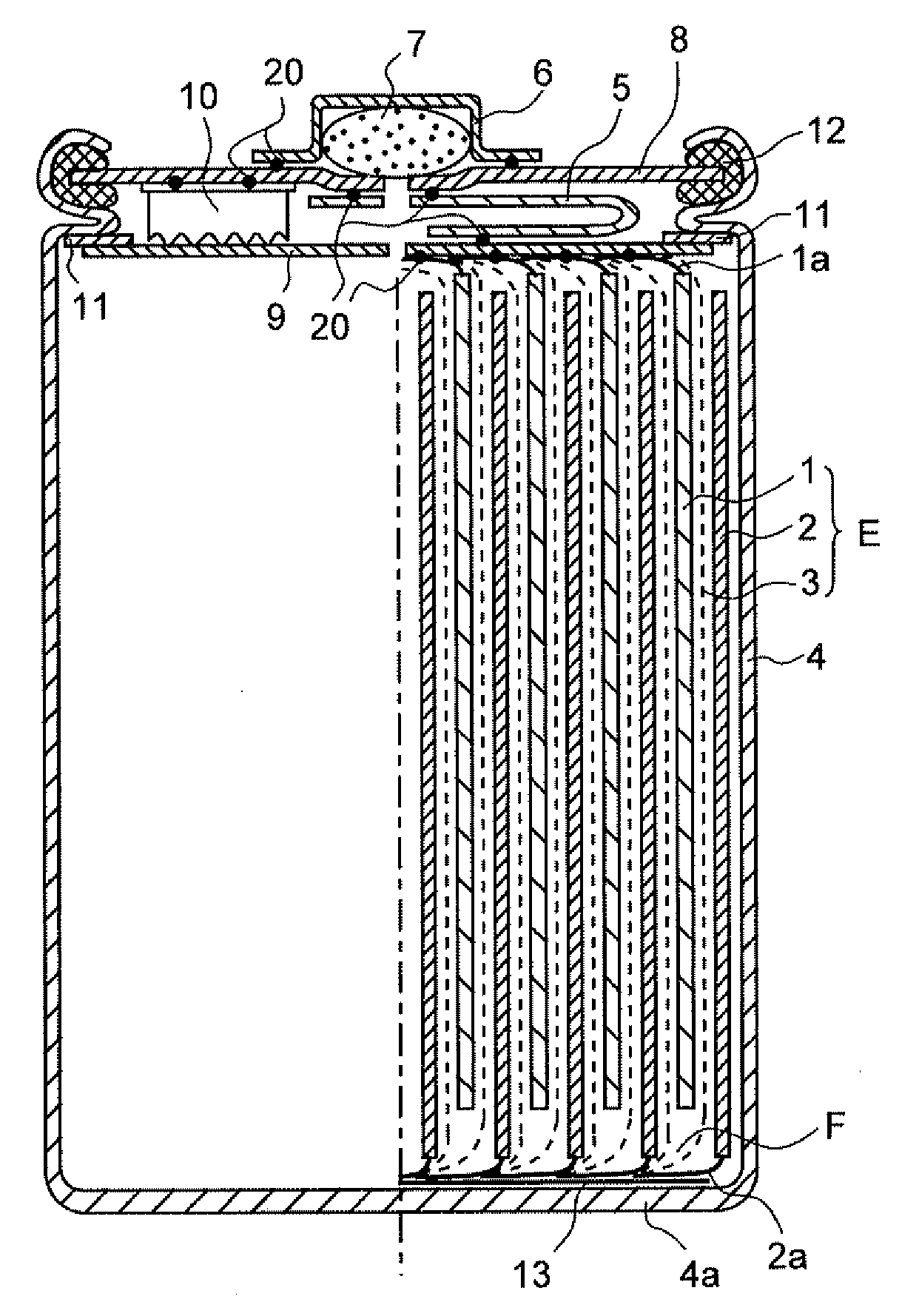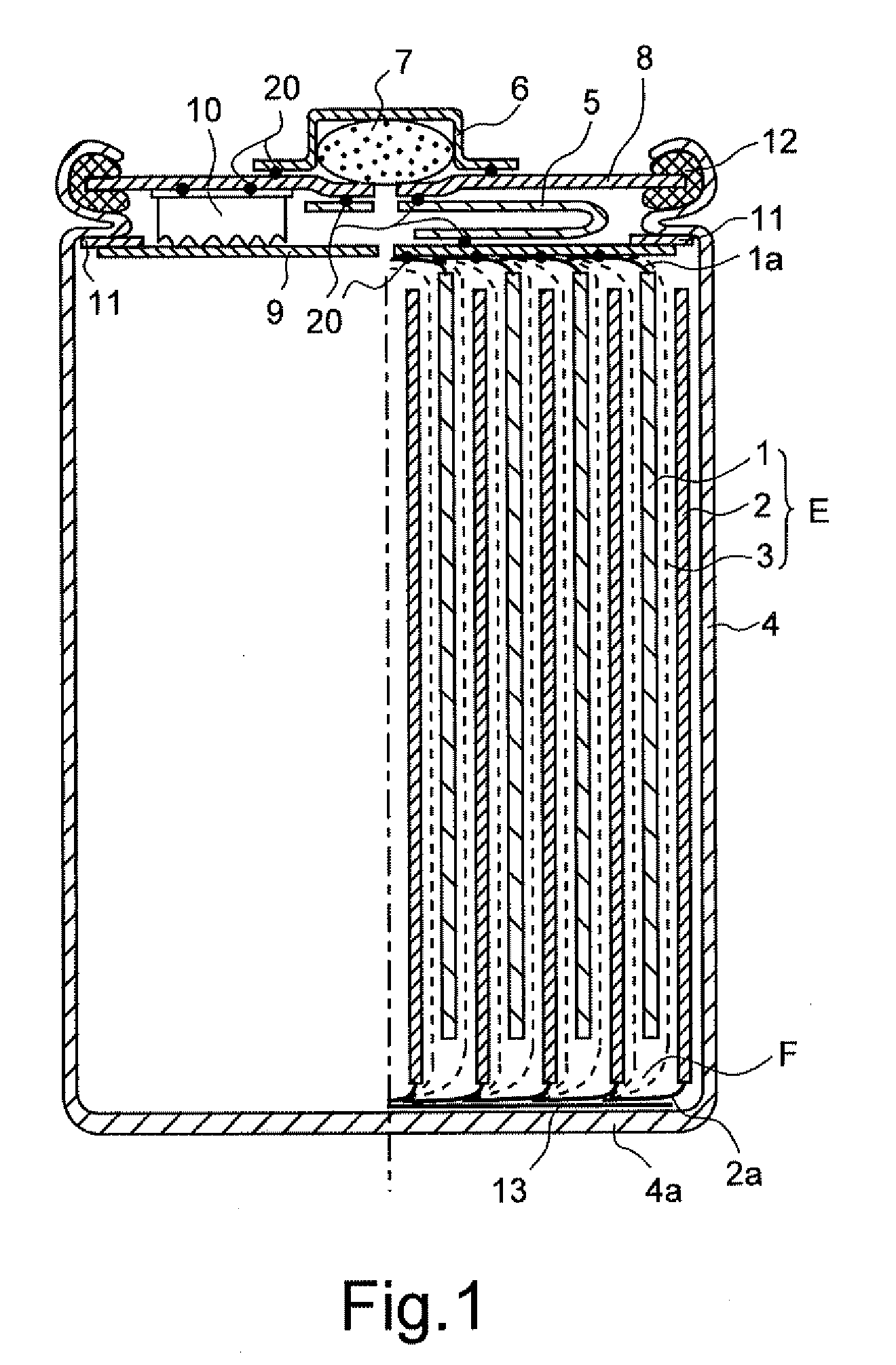Secondary Battery with a Spirally-Rolled Electrode Group
a technology of spirally rolled electrodes and secondary batteries, which is applied in the direction of wound/folded electrode electrodes, cell components, sustainable manufacturing/processing, etc., can solve the problems of short circuit, difficult spot welding with the cover body, and short circuit, so as to remove the necessity of welding and the process is made simple.
- Summary
- Abstract
- Description
- Claims
- Application Information
AI Technical Summary
Benefits of technology
Problems solved by technology
Method used
Image
Examples
example 1
[0040]A mixture of generally used nickel hydroxide (Ni(OH)2) powder and cobalt oxide powder with a weight ratio of 96:4 was kneaded with an aqueous solution of fluorine resin powder (1 wt. %) and carboxymethyl cellulose (0.3 wt. %), which was coated on an electrode substrate made of a three dimensional nickel foil (hereinafter called 3DF as in Japan unexamined laid open publication 2002-198055 already filed by the inventors). After dried, it was pressurized thereby obtaining a nickel positive electrode with an average filling density of 650 mAh and a thickness of 0.3 mm. Next, this electrode was cut into 43 mm in width and 910 mm in length, followed by removing the above mentioned coating material only by 4 mm in width along the long scale end surface of one side thereby forming a metal exposure portion and then, the positive electrode with a theoretical capacity of about 6.6 Ah processed for a cylindrical sealed D-sized battery with a diameter of about 32 mm was obtained.
[0041]The ...
example 2
[0048]The welding pieces 15a of the metal presser with a height of 3.5 mm as shown in FIG. 2a in Example 1 are welded to the cover body that corresponds to the position shown in FIG. 3 and with the same structure and the same formation as in Example 1, D-sized batteries are obtained with a height of 51 mm. When 5 cells of these batteries were under 10 C discharge as described in Example 1, the similar voltage as in the case of L in Example 1 was obtained.
example 3
[0049]Similar D-sized batteries are obtained by employing the similar structure as in Example 1 but without welding the metal-made current collecting plates 9 and 13 of the positive electrode 1 and the negative electrode 2 to the respective metal exposure portions. In this case, although the discharge voltage was very slightly reduced, it was much higher than M and N in Example 1 and rather it showed the value closer to L in Example 1.
PUM
 Login to View More
Login to View More Abstract
Description
Claims
Application Information
 Login to View More
Login to View More - R&D
- Intellectual Property
- Life Sciences
- Materials
- Tech Scout
- Unparalleled Data Quality
- Higher Quality Content
- 60% Fewer Hallucinations
Browse by: Latest US Patents, China's latest patents, Technical Efficacy Thesaurus, Application Domain, Technology Topic, Popular Technical Reports.
© 2025 PatSnap. All rights reserved.Legal|Privacy policy|Modern Slavery Act Transparency Statement|Sitemap|About US| Contact US: help@patsnap.com



